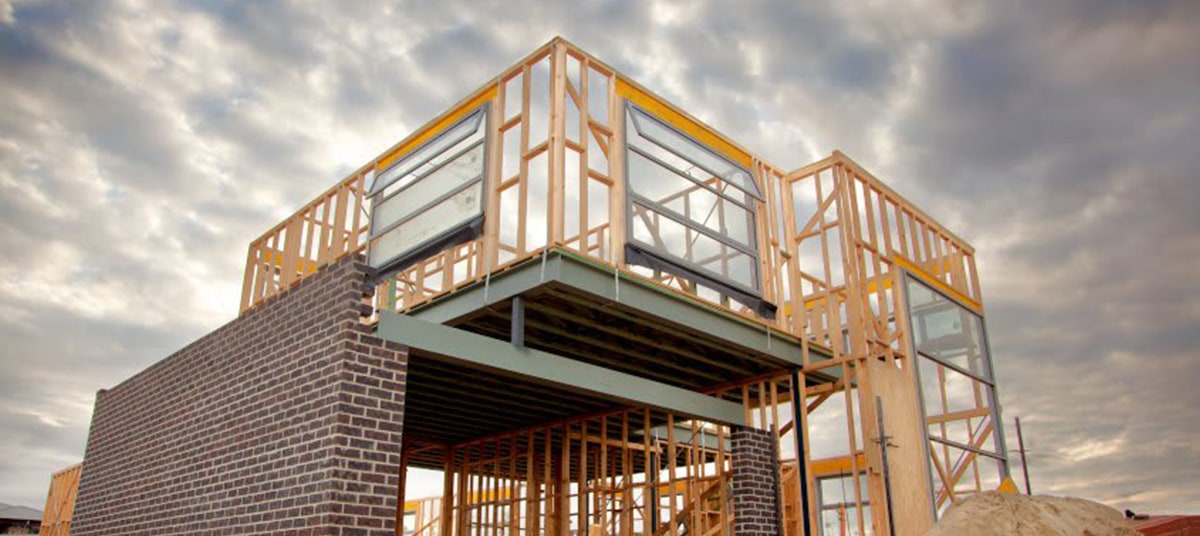
Just over 168,050 new homes commenced construction in 2024, around the lowest level in over a decade, according to new data.
New figures from the Australian Bureau of Statistics (ABS) have shown that a total of 168,052 new dwellings were commenced in the calendar year 2024, well below the average of 200,000 new homes a year.
The figures come after the ABS released Building Activity data for the three months to December 2024.
Moreover, the total number of dwellings under construction has dipped to its lowest level since March 2021.
During the December quarter, there were 213,834 total sector dwellings under construction, of which 85,169 were new houses.
This figure represents a 5.1 per cent dip from the December 2023 quarter, when there were 225,366 total sector dwellings under construction, and represents the eighth consecutive quarter where the number of dwellings under construction has declined, according to the ABS.
Meanwhile, the number of buildings commenced also went backwards.
The December 2024 quarter saw the total number of unit commencements down 4.4 per cent (41,911 dwellings), according to the ABS, with private sector house commencements down 6.1 per cent (26,136 dwellings), and other private sector residential down 5.6 per cent (14,196 dwellings).
ABS data also showed 49,121 dwellings were completed during the period in question, a 0.5 per cent dip from December 2023.
Private new houses accounted for 27,757 of these completions, falling 2.2 per cent from the September 2024 quarter.
Focus on new builds
The data demonstrated why housing supply and accessibility remain front of voters’ minds ahead of the May election.
Tim Reardon, chief economist at the Housing Industry Association (HIA), commented on the latest ABS release, saying Australia will need to build more than 250,000 homes annually to meet the Australian government’s target of 1.2 million homes.
“Home building is currently at the bottom of a cycle and is losing skilled workers to other industry sectors, which impedes future building capacity,” he said.
“Despite the low volume of new homes commencing construction, demand for skilled tradespeople remains high, just not in the new home building sector. The exceptionally low rate of unemployment, and their rare skills, see them in high demand from other industry sectors.
“The more workers that are lost from the home building sector in this cycle, the harder and more expensive it will be to increase that capacity, as interest rates fall and activity picks up.
“The exceptionally low level of unemployment in Australia is a double-edged sword for the industry as it creates demand for new homes and at the same time, leads to higher labour costs to build a new home.”
Reardon acknowledged the housing affordability measures announced by the major parties last week but said the focus should turn to offsetting the cost of taxes, fees, and charges by providing financial support for those who build a new home.
“Whether this is done through removing the imposts, such as lenders mortgage insurance or removing first home buyers from the established market and incentivising them to build a new home, can increase the supply of new homes,” Reardon said.
“These are the ‘easy-good’ solutions to the housing shortage.
“This doesn’t negate the need for the ‘hard-smart’ policies tackling land supply, infrastructure costs, planning regimes and delays to home building and reform of taxes on new homes.
“An investment in infrastructure, or tax reform or reducing delays, won’t impact on the price or supply of housing within an election cycle, but if they are sustained over a decade, they will begin to ease the cost of a new home.
“This should not be an excuse for politicians to renege on their responsibility to address housing affordability by arresting the high cost of delivering new land and rising taxes on housing.
“HIA forecasts that only 983,530 new homes will commence construction over that five-year period, unless meaningful changes to remove the barriers to supply are made.”
Accelerating construction
This latest data comes as the federal opposition unveiled a range of measures to accelerate home construction last Thursday (17 April), including funding for essential infrastructure such as water, power, sewerage, and roads and fast-tracking approvals.
In a joint statement, shadow treasurer, the Honourable Angus Taylor MP, said any collapse in home ownership has “profound implications”.
“The challenge requires every lever to be pulled to unlock supply and reduce the costs of construction,” Taylor said.
“This announcement builds on Investment Australia’s mandate to make it cheaper to build, finance, and power our country.”
[Related: FHB election promises could exacerbate house price problem]

